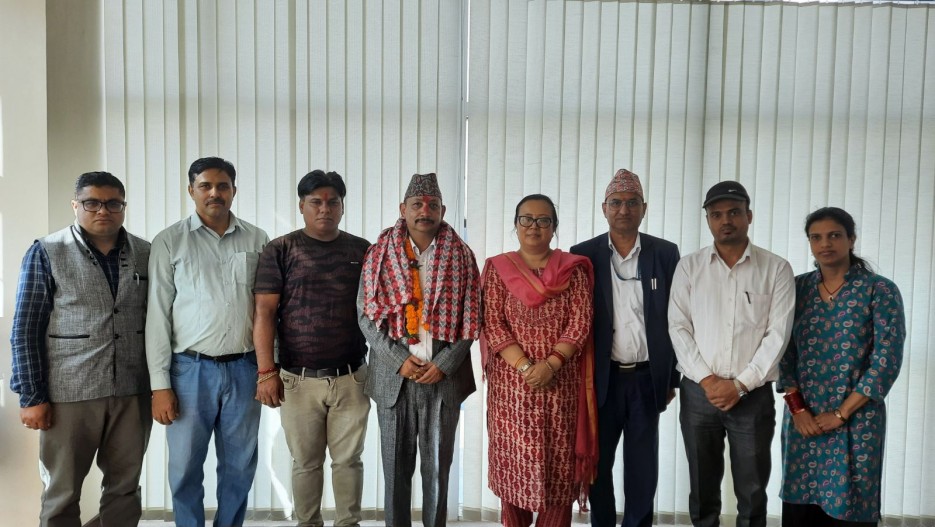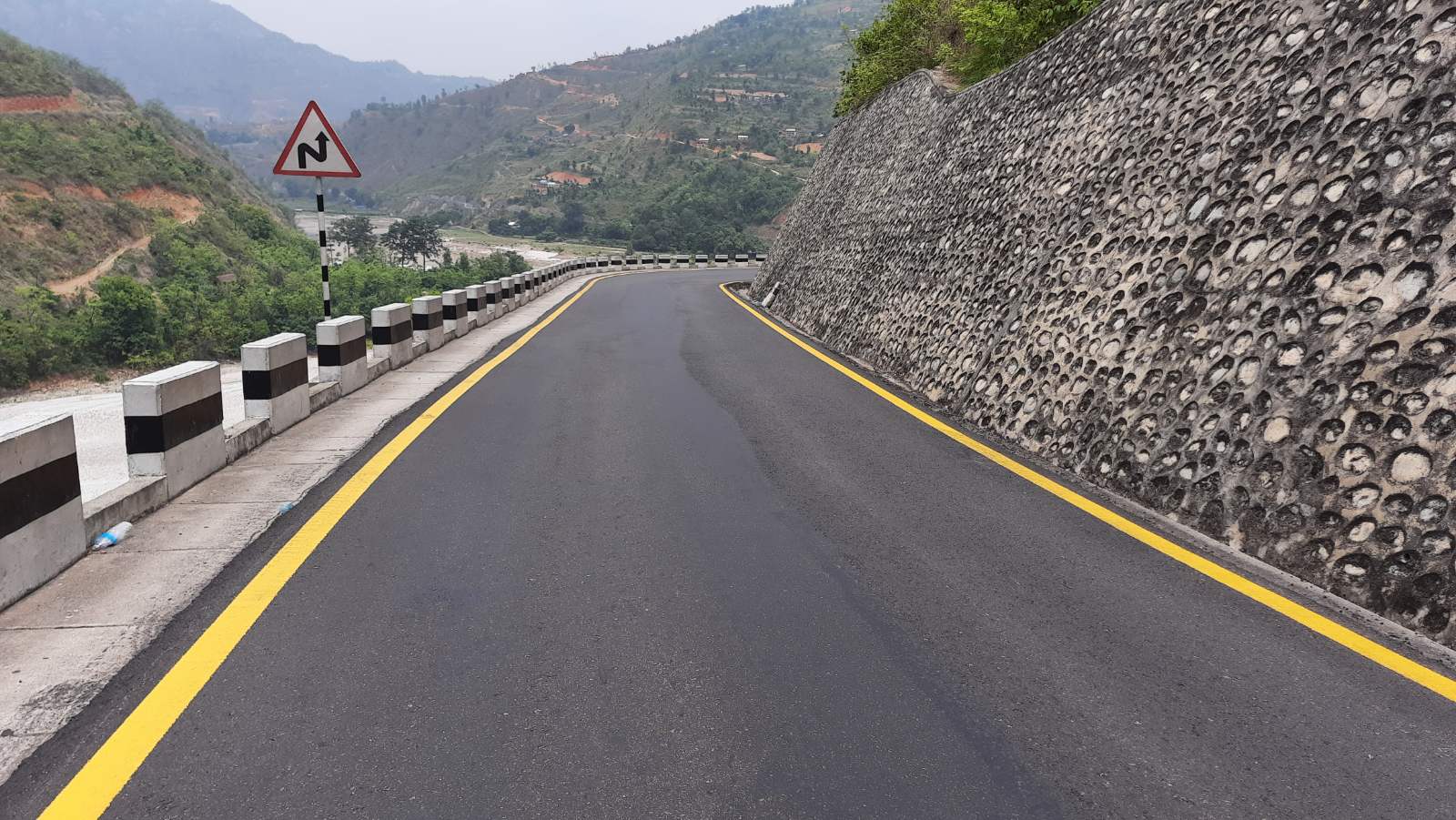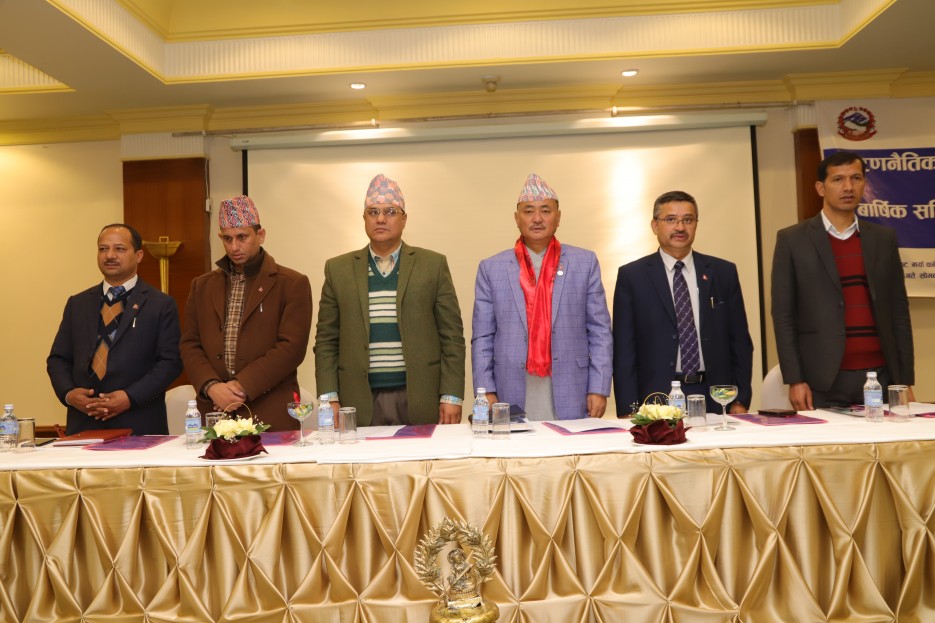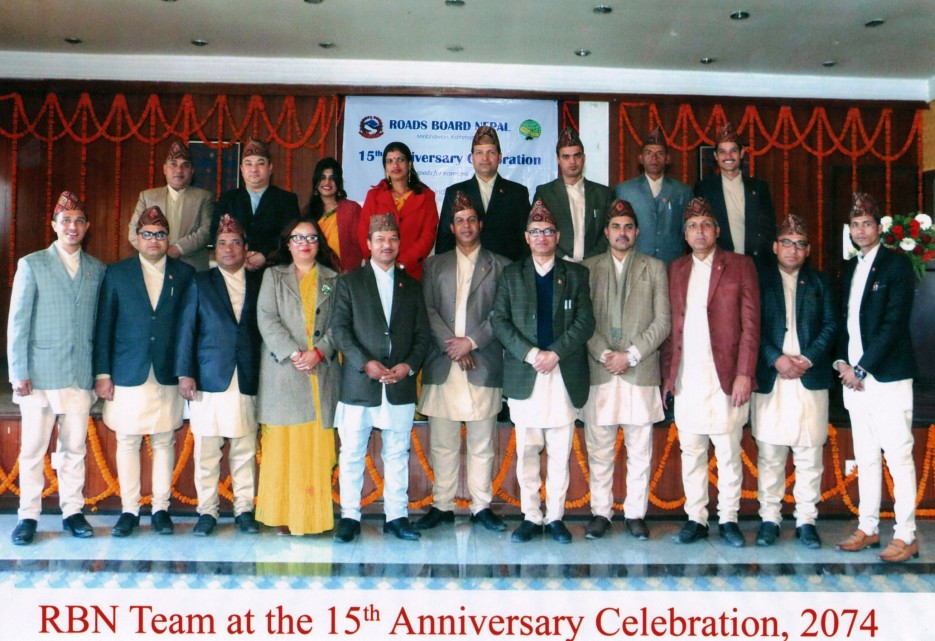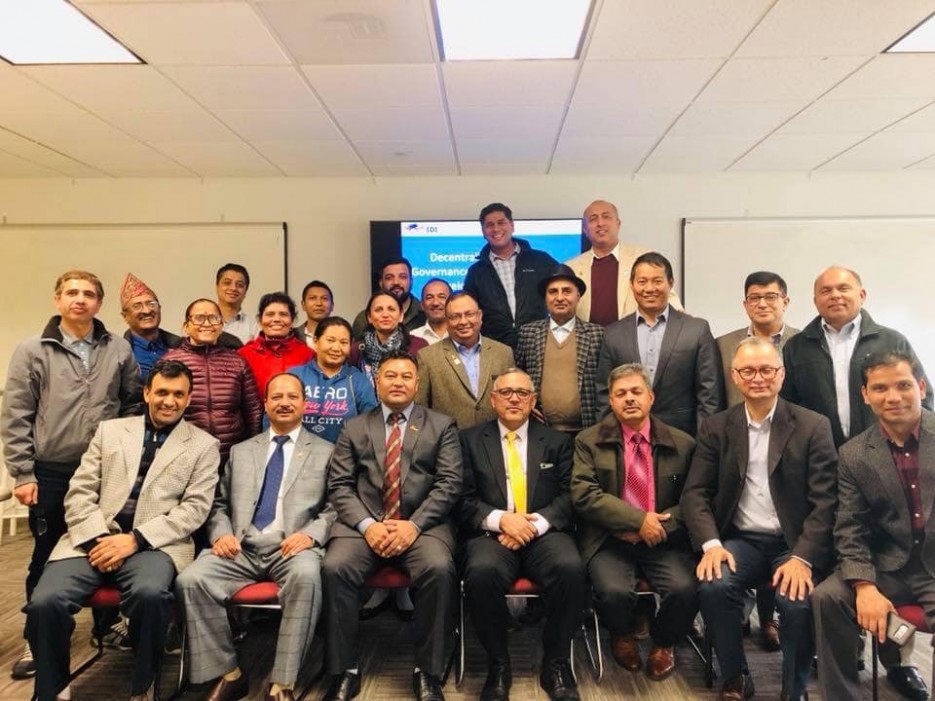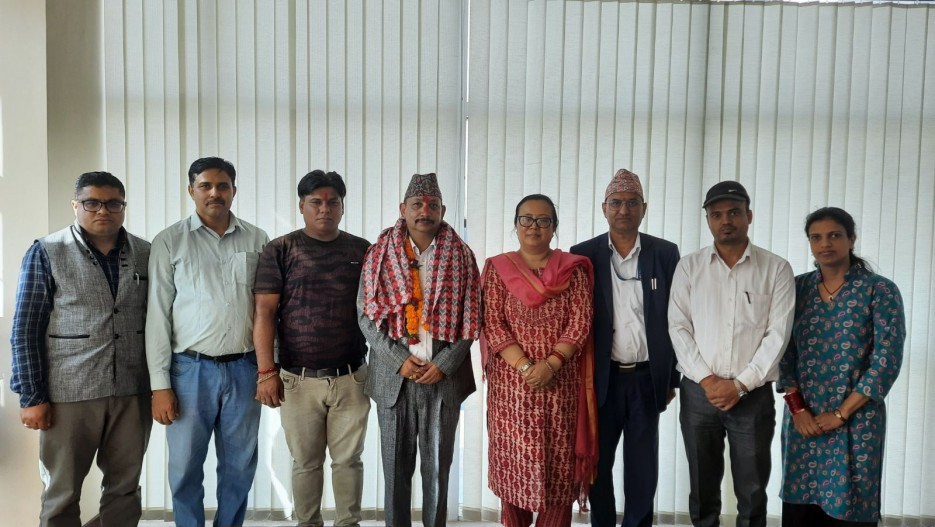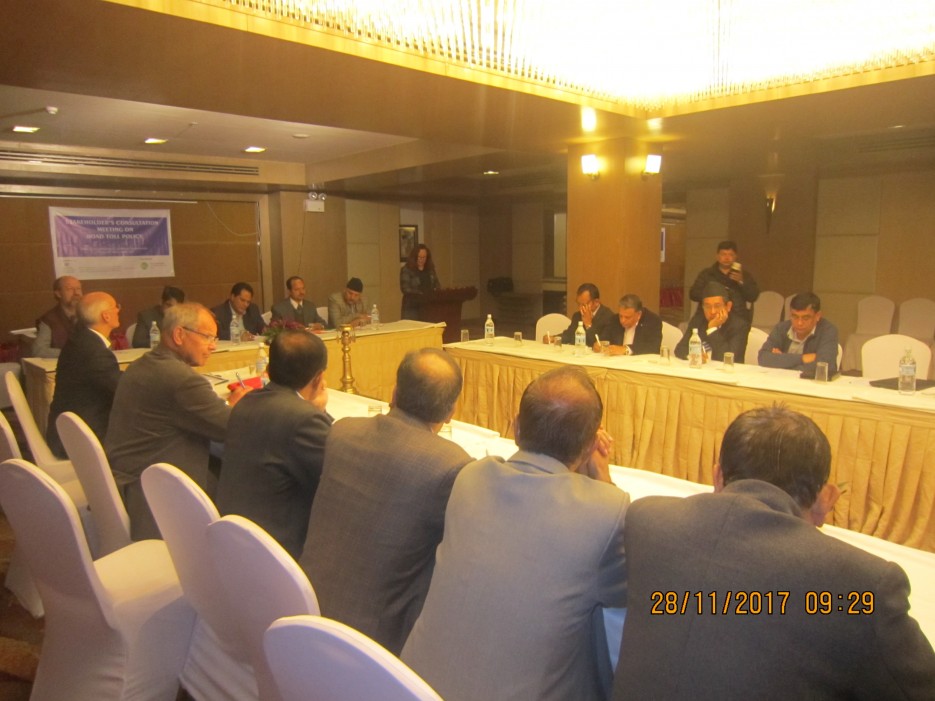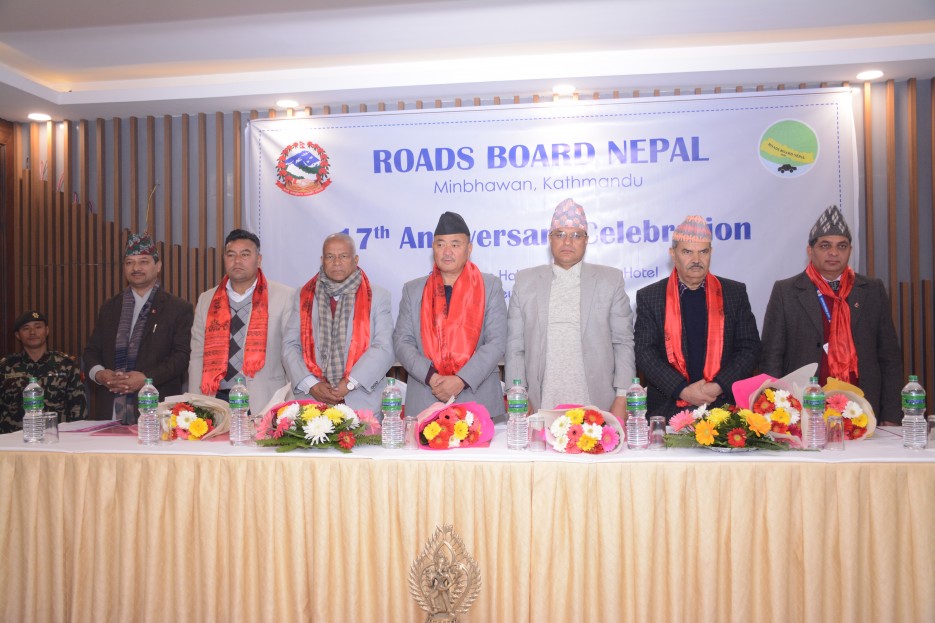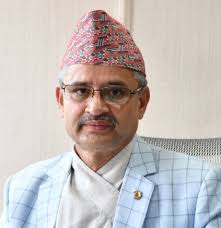
श्री केशव कुमार शर्मा
सचिव, भाैतिक पूर्वाधार तथा यातायात मन्त्रालय (अध्यक्ष)

श्री गणेश बहादुर के.सी.
कार्यकारी निर्देशक
Track Document
RBN funded road agencies
LRN (Local Road Network)
Notices
Roads Board Nepal (RBN) was established under the Roads Board Act 2058 (2002) with the aim of providing sustainable fund for planned maintenance of the roads. The aim of planned maintenance is to keep existing maintainable roads in serviceable condition, reduce vehicle operating cost and provide more comfort to the road users. RBN is a self gorverning, self sustaining and organized entity based on Public-Private Partnership [PPP] model. The major function of RBN is to collect, manage and allocate fund for road maintenance to the Road Agencies (RA). RBN is fully devoted in providing beter road service to the road users as they pay in the form of direct road toll, fuel levy and vehicle gegistration fee.
Moving goods, products, and people becomes prohibitively expensive without cost-effective road transportation in a land locked country with varied topography such as Nepal . It becomes expensive and time consuming. As a result, apart from other, tourism - main foreign currency earning sector - also suffers and the country's competitiveness is reduced. Economic development, commerce, and poverty alleviation are also negatively affected by underinvestment and inadequate management of road maintenance. Unfortunately, the amount of financing and technical skills needed to provide even a reasonable road service is simply not within the means of most public sector agencies.
Nepal's transport sector objective as defined in the National Transport Policy is to provide uninterrupted flow of goods and people with safety and transport services available at least cost, and help poverty reduction effort through broad based economic growth including balancing regional development by generating employment, providing access to the market to local products and accelerating the potential economic growth in other sectors like tourism and hydropower.
In a country with scarce resources and competition between various sectors for resource allocation from the government, challenges to institutionalize road maintenance prevail due to r esource constraint and outgrown financial need for road maintenance than the government budget for it. Other challenges include lack of commitment and willingness on maintenance from all concerned together with lack of institutional arrangement and capacity on the part of road agencies. Further, the traditional management system in general is not efficient and effective, and lacks stakeholder participation and ownership.
In order to address to these challenges, an appropriate model of reform based on public-private partnership was the call of the day. New progressive approaches have emerged for more than a decade and gratifyingly the results are found encouraging. Such reforms have typically entailed restructuring of road network management; improvement in management and sustainability of road assets; introduction of private sector financing and off-budget mechanism, and change in procurement of road maintenance works and quality control/assurance.
Restoration value of existing road asset in Nepal is about Rs eight five billion equivalent to 1.78 billion US$ at the price of 2000. It is a prime challenge to preserve this asset. This can be achieved by implementing a planned maintenance management system [PMMS] comprising of a series of inter-dependent routine, recurrent, periodic, and emergency activities carried out both on and off the road, and bridges. It reduces rate of deterioration of road prolonging its life, reduces vehicle operating cost, and provides reliable/safer transportation of goods and passengers. Need based budget is required to maintain roads properly and to keep them in good condition. It is estimated that the country requires about one billion rupees annually for the road maintenance whereas the allocation is much less. Apart from under-financing of regular maintenance, the annual increase in road length projected at 6.5 % requires additional fund for its maintenance.
Policies concerned with the road maintenance in Nepal are based on short term, medium term and long term plans such as medium term expenditure framework [MTEF], 10 th five year plan, and 20 year road plan. Central level government agency's role shifts to that of a facilitator. Self-reliant capacity for arrangement of source of investment is to be developed. Priority is given to maintain and upgrade central level transport infrastructure with due attention to environmental concerns, safety, and appropriate institutional arrangement. Local network is to be gradually handed over to local bodies. However, financial requirement for maintenance can not be fulfilled by the government only. Road fund collected from users is the only possible way.
RBN works together with road agencies [RA], which actually implement the road maintenance works. The department of roads [DOR] is identified as the RA for the maintenance of strategic road network [SRN]. Maintenance of urban, district, and local roads is governed through the department of local infrastructure development and agricultural roads [DoLIDAR], which coordinates the district development committees [DDC] and municipalities [MC] recognized as the road agencies for local road network [LRN]. On the other side, the RBN has to report to and communicate with the GoN through the ministry of physical planning and works [MPPW]. Twenty first century public sector service such as roads can not be managed in isolation. The participation of users shall be defined. Other stakeholders are equally important and their voices shall be heard. Transparency in the process of road maintenance management is of paramount importance. This can be enhanced through the efficient work of RBN as it constitutes representations from government, private and civil sectors.
RBN prepares comprehensive IAP based on Annual Road Maintenance Programs [ARMP] submitted by the RA. RBN ensures the optimum utilization of scarce resources based on its prioritization methods. Priority is linked with the traffic flow, terrain type, pavement condition, and maintenance type such as routine, recurrent, periodic, rehabilitation, reconstruction and upgrading. Emergency Maintenance is addressed to through predetermined reserve fund. A Road not in maintainable condition is not given priority for regular maintenance, as it has to be brought to maintainable condition by rehabilitation or reconstruction first. RBN decides final allocation to RAs. RBN has authority to monitor, control and check, evaluate, and to withhold the money release to non-performing RA.
The success of the RBN could lead to development of Roads Transport Authority and ultimately National Transport Board as envisaged by the 10th development plan and could pave a way towards initiation of Private-Public Partnership in road development, maintenance, and operation in one of the forms such as Lease, Management contracts, BOT, BOOT, BOO, Divestitures. The participatory procedure of the RBN and efficient management ensures safeguards against corruption. For this RBN accounts shall be audited by external auditors, reports and key activities shall be made transparent through annual publication in national newspapers.






Radio Programs
Sadak Surakshya 2076-12-28
Sadak Surakshya 2076-12-28
Sadak Surakshya 2076-11-30
Sadak Surakshya 2076-11-30


